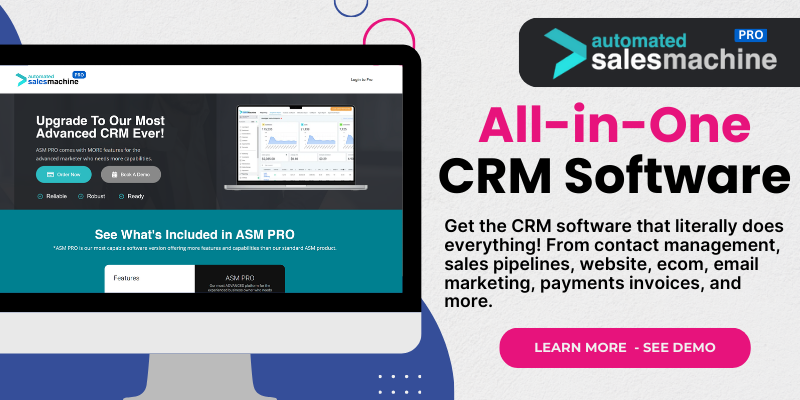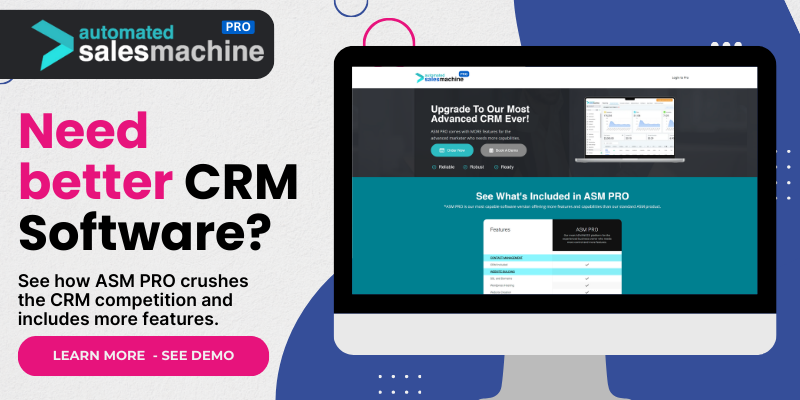Understanding Your CRM Software
What is CRM Software?
Let’s dive right in! CRM software, or Customer Relationship Management software, is a tool that helps you manage all your interactions with customers. Think of it as your digital Rolodex but way cooler. I’ve found it to be essential in keeping track of leads, sales, and even billing. It centralizes data, making it easier to access customer information when you need it most.
At its core, CRM software tracks and analyzes customer interactions throughout the entire lifecycle. It’s not just about keeping contact details; it helps you understand buying patterns and customer preferences, which is gold for any business. I’ve used CRM tools that integrate with email, calendars, and billing solutions, which streamline processes immensely.
Understanding your CRM’s capabilities can empower you to leverage it fully, especially when it comes to billing. Most of the leading CRM solutions come equipped with billing functions that can simplify invoicing and payment tracking, making your billing system more efficient than ever.
Choosing the Right CRM for Billing
Choosing the right CRM software is like picking the right tool for a job; you want something that fits your needs. There are tons of options out there, from robust enterprise systems to simple solutions for freelancers. Personally, I’d recommend looking for features that support billing right off the bat.
Keep an eye out for integrated invoicing capabilities, as they can save you a world of headaches. Some CRMs even allow you to create recurring invoices, setup billing reminders, or even process payments directly through the platform. Think about the specifics of your business—do you need something to manage subscriptions or traditional invoicing? Tailoring your choice to your unique requirements can make all the difference.
Don’t forget about scalability. As your business grows, you’ll need a CRM that can grow with you. I’ve made the mistake before of picking a solution that was great at first, only to outgrow it within months. Make sure to consider a platform that has additional features or paid tiers you can upgrade to later on.
Familiarizing Yourself with the Interface
After choosing your CRM software, it’s time to get comfortable with it. This might sound trivial, but really understanding the layout and functionality can save you so much time in the long run. Spend some time just clicking around and exploring the features. You might discover tools that can help streamline your billing that you didn’t even know existed!
Most CRM platforms provide tutorials or support documentation. I highly recommend utilizing these resources to grasp the intricacies of billing features. Sometimes, you might think you know how to use a feature, but it’s worth taking a deep dive to uncover hidden gems that could optimize your billing process.
Additionally, I find it helpful to create mock situations. Set up a dummy customer and practice issuing invoices or processing payments. This hands-on approach ensures that when it comes time for the real deal, you’re not fumbling around and second-guessing yourself.
Setting Up Your Billing System
Configuring Billing Preferences
Once you’re comfortable with your CRM, the next step is to set up your billing preferences. This is where you get into the nitty-gritty aspects of how you want your invoicing to work. Configure your invoices, add your logo for branding, and make sure to include all necessary contact information to establish credibility.
Deciding on payment terms is essential, too. Do you want to require a deposit upfront? What about late fees for overdue invoices? Setting these parameters can help set clear expectations with your clients. I’ve learned that being upfront about payment terms helps reduce confusion down the line.
Some systems even allow for automatic tax calculations based on your geographical location. If you’re doing business across borders, this feature can save you from a lot of potential headaches come tax season. Make sure to research the relevant tax rates and incorporate them during this setup process.
Creating Invoice Templates
Templates can save you a lot of time and ensure consistency across your billing. Most CRMs come with pre-designed templates that you can customize to suit your brand. I always recommend utilizing these templates for a polished look. It reflects professionalism!
Take some time to design a template that includes all necessary details, such as itemized services, payment methods, and due dates. Being clear on what you’re billing for can help prevent any disputes and will minimize back-and-forth discussions with clients.
You can even set up multiple templates for different types of services or customers. Just remember to keep it straightforward. Too much fluff can confuse clients rather than inform them. A simple, clean design typically does the trick!
Testing the Billing Process
Before rolling it out to your clients, make sure to test your entire billing workflow. Send an invoice to yourself or a friend and see how the whole process goes down. It’s important to catch any hiccups before they affect your customers. Nobody likes getting the wrong invoice, right?
Pay attention to the notifications, payment processing, and follow-up reminders. I often simulate various scenarios to ensure everything’s working as it should. This also helps me identify if the payment gets lost in translation or if clients find it difficult to fulfill.
Gather feedback if you can. If you have colleagues or friends who can go through the process as a client, ask for their thoughts. It’s always useful to get an outside perspective to see if there are any gaps in the customer experience.
Managing Invoices and Payments
Tracking Invoice Status
Tracking the status of your invoices is a crucial step in managing your billing efficiently. Your CRM should offer features to track whether an invoice is sent, viewed, or paid. I love how many CRMs provide real-time updates about invoice status. Knowing where things are can greatly relieve stress!
Make sure to regularly check the status of overdue invoices. Implementing a habit of following up on unpaid bills can help maintain cash flow. I usually draft gentle reminders a week after an invoice is due. This can often prompt clients to take action without feeling like I’m nagging them.
Some tools even allow you to set up automatic reminders that trigger based on your pre-configured settings, which is a massive time-saver. Automating this process can allow you to focus more on your actual work rather than chasing payments.
Processing Payments
Next up is processing payments. Many CRMs let you accept various payment methods directly through the platform, such as credit cards, PayPal, or bank transfers. It’s important to choose a method that’s convenient for both you and your clients.
This can enhance the user experience significantly. Clients will appreciate having multiple options, and oftentimes, the easier you make it for them to pay, the quicker you’ll get paid. I’ve seen this first-hand in my business practice — clients are consistently happier when transactions are seamless.
Don’t forget about security! Always select payment processing options that prioritize encryption and security standards. Having peace of mind about financial transactions builds trust with your clients and protects your business.
Communicating with Clients
Communication is key, especially when it comes to billing. If there’s a problem with an invoice or a delay in payment, it’s best to address it head-on. Your CRM should allow you to send quick messages or reminders, so use this feature wisely.
I always try to maintain a friendly tone in my communications. Being personable goes a long way, and can soften the blow if there are issues. It’s often the little things that can make an uncomfortable conversation easier.
Encourage your clients to reach out if they have questions about invoices or payments. The more transparent you are, the smoother the billing process will be. Clients often appreciate the prompt and open communication; it builds rapport for future business!
Analyzing Billing Reports
Accessing Financial Reports
Once you have a solid billing process in place, it’s time to dive into analyzing your financial reports. Most CRM software will provide insights on invoicing, payments received, and outstanding balances. These reports are invaluable for understanding your business’s cash flow.
Being able to visualize your income and outstanding payments helps paint a clearer picture of your financial health. I often sit down at the end of each month to analyze these reports to spot trends. Am I getting paid on time? Are my invoices unclear and causing delays? Gaining these insights has been crucial in making informed decisions for my business.
Plus, using these reports to understand client payment behaviors can lead to better strategies for future invoicing. It can also help identify any chronic late payers, allowing for proactive measures to ensure you get paid on time moving forward!
Making Adjustments Based on Data
After analyzing your financial reports, it’s time to make some adjustments if needed. Maybe certain clients are consistently late, or maybe you find you need to tweak your payment terms to improve cash flow. Being adaptable is crucial in any business, including how you bill.
This might also mean refining your invoicing strategy, such as adjusting due dates or introducing late fees. It’s essential to listen to the data and adapt your approach as needed. For instance, I recently changed my payment terms based on feedback, making it easier for clients to navigate.
Always keep an open mind about these changes. It’s a learning curve! Tweaking can lead to better relationships with your customers and a more stable income stream.
Creating Monthly Overview Reports
Creating monthly overview reports can provide a snapshot of your performance, helping identify what’s working and what isn’t. I personally find this useful for planning discussions during quarterly reviews or strategy sessions. These overviews summarize likes, dislikes, and areas where I can improve.
A good overview should reflect whether you are meeting your financial goals. It can also spotlight your clients’ payment habits and help budget for future expenses. Seeing your progress visually is motivating!
Use these reports to communicate with your team or business partners, ensuring everyone is on the same page regarding finances. Collaboration breeds innovation, and who knows? Others might suggest brilliant tweaks that you hadn’t even considered!

